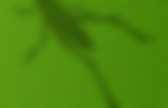

QT-tree L-system. A(n) gives the net rotation (measured in right angles) after taking n steps along a dragon curve. - Christopher Hendrie (hendrie(AT)acm.org) This sequence generates A082410: (0, 1, 1, 0, 1, 1, 0, 0, 1, 1, 1...) and A014577[A014577 is the first difference of this sequence with symbols +1 -> 1 and -1 -> 0]; identical to the latter except starting 1, 1, 0...; by writing a "1" if a(n+1) > a(n); if not, write "0".
E.g. A014577(2) = 0, since a(3) < a(2), or 1 < 2. - Gary W. Adamson (qntmpkt(AT)yahoo.com) 0; 0 -> 0 1 1 -> 2 1 (mirror previous map, add 12 -> 2 3 ...)3 -> 4 34 -> 4 55 -> 6 56 -> 6 77 -> 8 7 .... A014577: The regular paper-folding (or dragon curve) sequence. Waterbomb Tessellation and Beyond. It all started with the platonic passion on origami tessellations, not much of the origami, but the tessellation part, as I didn’t want to fold it physically, nor model them using a physical engine such as Kangaroo. That would also be very unnecessary (and yes, very boring) to simulate a folding effort on computer unless we lose our connection with the real world. Instead, I tried to look at a much abstract, silly and basic part of it; the creasing patterns. I found below tessellation named “waterbomb” by the beautiful source of Eric Gjerde (here) to start an exploration.
It quickly became a challenge for the dataflow environment (as I liked most). As you see, it has a regular triangular tessellation (grid) as underlying system. First, I tried to implement 3 hexagonal grids superimposed to find the locations of polygons. When I shift this pattern 7 cells to the left, It reflects one row below. This goes on like that.
Plugins. Fabrication. Grasshopper: Parametric CurvesThis module covers the basic parametric properties of curves along with common grasshopper methods for evaluating and dividing curves. ARCH 598 Summer 2011information >> n-formations FABRICS // LATTICES // FIELDSThis course is designed to introduce and explore computational design, algorithmic thinking, and digital manufacturing–both: the larger ramifications that emerging digital technologies and ideas are having architectural theory via readings, discussions, presentations; and the practical application of these ideas and tools through a series of hands-on, iterative modeling and fabrication assignments. ARCH 581/498 : Fall 2010Digital Design + Fabrication Foundations I Grasshopper: Surface to Planar TrianglesGrasshopper : Surface to Planar Triangles : Fabrication Layout of Planar Components Laser Cutting: Adobe IllustratorLaser Cutting from Adobe Illustrator.
Grasshopper (Explicit History) Same Area Voronoi using Galapagos I have been quite fascinated by the recent development of Galapagos for Grasshopper. This is a simple example of its application set up to solve for a 10-point voronoi division within a user-defined boundary where all the parts are divided as equally as possible in terms of their areas. I ran this with an initial population of a hundred for 200 generations. The results are not 100% perfect, but very close (which is the nature of an evolutionary solver I believe).
Gradient Patterns Testing different patterns with grasshopper. Pagora Bench Playing with hopper and Maxwell 2 Two Surfaces Twisted Box It’s been a while I’ve played with Grasshopper. In order to use the definition, first define a box, and some geometries within the box as your base component. Two Surface Space Frame (Rhino Explicit History) Ah so, the new version of the Explicit History plug-in for Rhino is out. Crtli_gh_space_frame.wrmcrtli_gh_space_frame.3dm. Space Symmetry Structure.